Spending on Nuclear Weapons in 2021 by nine nuclear-armed countries
The post-Cold War arms control structure has effectively controlled the nuclear weapons race for more than three decades; however, it is now crumbling as the nuclear powers from all around the world are upgrading, modernizing, and expanding their nuclear stockpiles.
The world’s nine nuclear-armed countries have spent $82.4 billion on nuclear weapons in 2021, an 8% increase compared to 2020.
The biggest spender among these nine countries was the United States, accounting for more than half of the total $82.4 billion. China stood in second place followed by Russia, the United Kingdom, and France. The annual report from the International Campaign to Abolish Nuclear Weapons (ICAN) broke down the nuclear spending in each country.
According to another recent report by Stockholm International Peace Research Institute (SIPRI), the number of nuclear warheads has decreased from 13,080 in 2021 to 12,715 this year. The reduction of the nuclear stockpiles is positive progress considering that during the peak in 1986, there were at least 70,374 nuclear warheads all across the world, mostly owned by the United States and the Soviet Union.
The list of countries holding nuclear weapons is also increasing in recent times. The world’s nuclear arsenal is expected to grow again at an unprecedented rate in the coming few years amid the ongoing global security crisis.
Although the U.S. is one of the top spenders on nuclear arms capabilities, the Russian nuclear arsenal remains the largest in the world. Russia and U.S. combined account for 90% of the total nuclear warheads around the world. For decades, Moscow and Washington dominated the realm of nuclear weapons as they increased their nuclear arsenals to a tipping point where a nuclear battle between the two countries could result in the apocalyptic demise of the modern world.
During the Golden Age of Arms Control (1987-2000) an 80% decrease in the number of nuclear warheads was achieved as a result of the START (Strategic Arms Reduction Treaty) between the U.S. and the former Soviet Union. Later, the New START between the U.S. and Russia paved the way to decrease the global nuclear stockpiles until the new actors entered the scene. The New START agreement remains effective until 2026.
The United Kingdom also plans to reverse its nuclear non-proliferation policy amid the rising threat of escalating security situation in Europe. In March 2021, British Prime Minister Boris Johnson announced that his government intends to increase its operational nuclear warheads from 180 to 260.
Over the last decade, China has increased the number of nuclear warheads and made significant progress in weapons development systems that can carry nuclear warheads including a hypersonic missile that flew at more than five times the speed of sound (Mach 5). The U.S. Department of Defense has estimated that by 2030, China would increase its nuclear arsenal to more than a thousand warheads. China’s current arsenal stands at 350 warheads.
Apart from these five United Nations Security Council permanent member countries, four other nuclear power states are spending millions on their nuclear weapons program. These countries include India, Israel, Pakistan, and North Korea.
Largest Spenders
Following are the details for each country’s number of nuclear warheads and total spending on nuclear programs based on the data provided by ICAN.
United States
The United States’ nuclear stockpile currently stands at 5,428 nuclear warheads. The country spent at least $44.2 billion last year to maintain and expand its nuclear weapons capabilities. The U.S. Department of Energy’s National Nuclear Security Administration (NNSA) and the U.S. Department of Defense is responsible for the country’s nuclear weapons research, development, production, testing, and dismantlement. U.S. spending on nuclear weapons has increased since 2020 when the country spent $30.2 billion on its nuclear warheads.
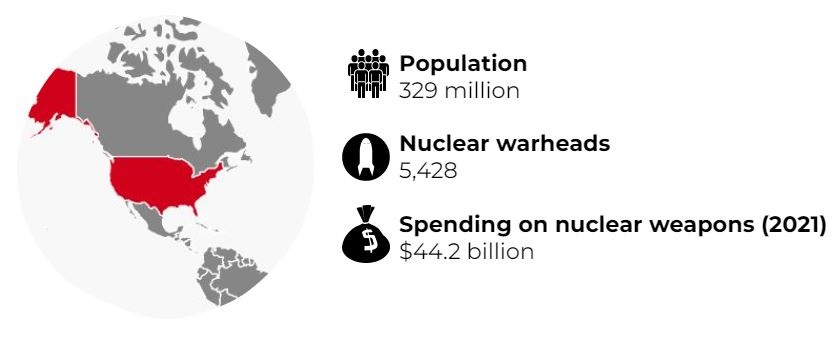
China
China ranks second as the country spent approximately $11.7 billion on nuclear weapons development in 2021. China’s nuclear stockpile is far less compared to the U.S. and Russia, standing at 350 nuclear warheads that can be launched from land-based missile systems, submarines, and aircraft. China’s spending on nuclear weapons development is quite large in contrast to its current nuclear arsenal. This indicates that China is in the process of expanding its nuclear weapons capabilities. The reports released by the U.S. Department of Defense, based on thousands of satellite images indicate that China is building more than 300 missile silos.
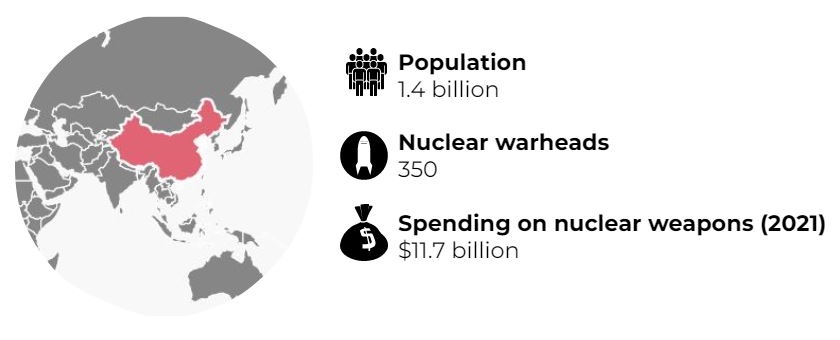
Russia
Russia has 5,977 nuclear weapons, consisting of land-based, submarine launch, and aerial launched missiles. According to a 2018 report, Russia spends at least 13% of its total defense budget on nuclear weapons. Based on Russia’s $65.9 billion military budget for 2021, it is estimated that the country spent at least $8.6 billion on its nuclear weapons. Russia spent more or less the same amount on its nuclear weapons in 2020, however, with its increasing military engagement in Europe, it is expected that its emphasis on nuclear weapons production and development would increase by the end of this year.
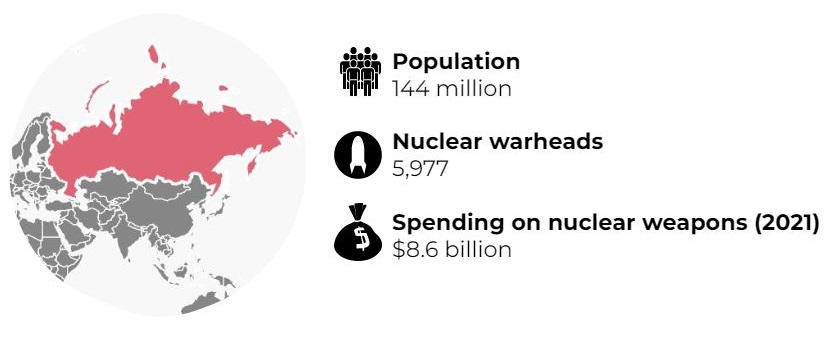
United Kingdom
The United Kingdom has a total of 225 nuclear warheads. Most of the UK’s nuclear warheads are designed for submarine-launched missiles. UK is also working closely with the United Stated on the Trident II D-5 nuclear-capable missile that can be used to carry nuclear warheads. Although the UK government does not release official statistics about its military spending, specifically focusing on the nuclear programs, it is estimated that the UK spent $6.5 billion on its nuclear weapons development program in 2021. The estimation is based on the cost of the UK’s Marine Underwater Future Capability (MUFC) program which majorly focuses on expanding the country’s underwater military capabilities for nuclear warheads. Based on the same methodology, and accounting for inflation, the UK spent more or less the same amount on its nuclear weapons in 2020.
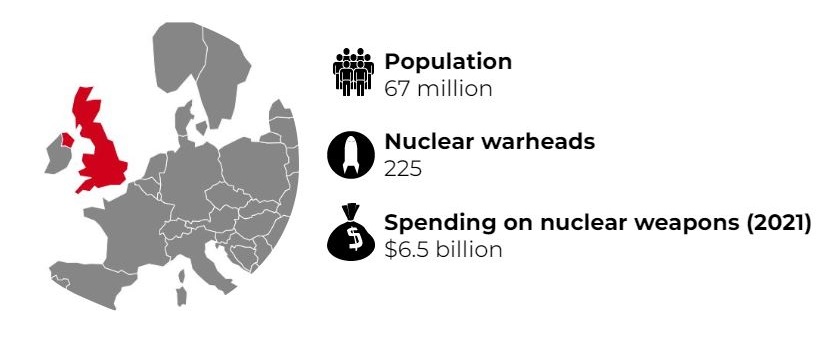
France
France is at the bottom of the five United Nations Security Council permanent member states in terms of spending on nuclear weapons development. France has more than 300 active nuclear warheads. France’s current spending on nuclear weapons stands at $5.9 billion. The estimation of France’s nuclear spending is based on its 2020 budget for nuclear deterrence. The current cost of France’s nuclear deterrence program does not include the cost of nuclear weapons launching setups such as Rafael jets. The European country’s nuclear development program accounts for 10% of its total military budget.
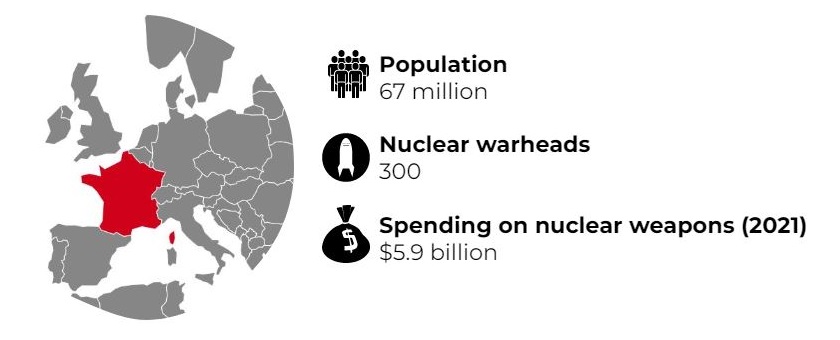
India
India is the top spender on nuclear weapons among the nuclear states that are not permanent members of the UN Security Council. India has an estimated 160 nuclear warheads and holds the capability to launch nuclear weapons from land-based missiles, aircraft, and submarines. India’s spending on its nuclear capability enhancement is very low compared to the U.S. or China, however when compared to other departments of India’s military spending, running a nuclear program takes a huge chunk of its defense budget. While very few details are known about India’s nuclear weapons spending it is estimated that India dedicates about 46% of its Defense Research and Development budget to enhancing its nuclear capabilities, which translates into at least $2.3 billion.
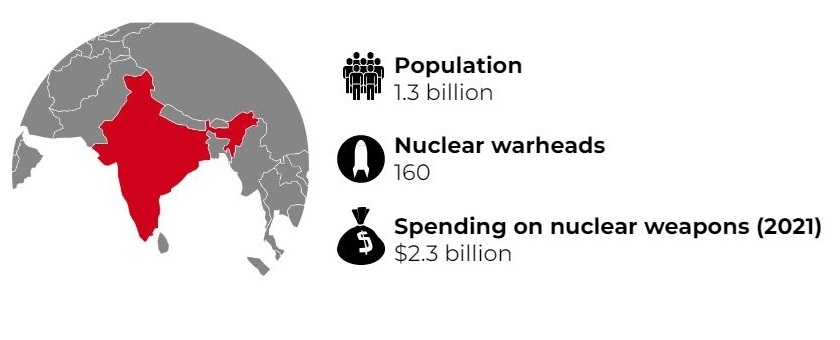
Israel
There is no reliable or confirmed information about Israel’s nuclear program but it is estimated that Israel has at least 90 nuclear warheads. Israeli authorities have never acknowledged nor denied the possibility of Israeli nuclear warheads. Since there are no official sources to estimate Israel’s nuclear spending, SIPRI estimated that in 2021 Israel has spent at least 5% of its $24.5 billion military budget on nuclear weapons development, which accounts for at least $1.2 billion.
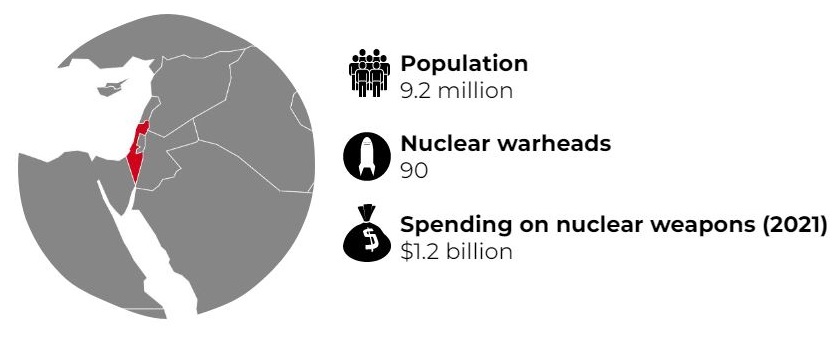
Pakistan
Pakistan and India’s nuclear capabilities go head-to-head with each other. Pakistan’s nuclear program came into being as a deterrence strategy to counter India’s nuclear capability. However, Pakistan spends far less on its 165 nuclear warheads compared to India. A significant part of Pakistan’s military budget is spent on its nuclear program, which accounted for $1.1 billion in 2021.
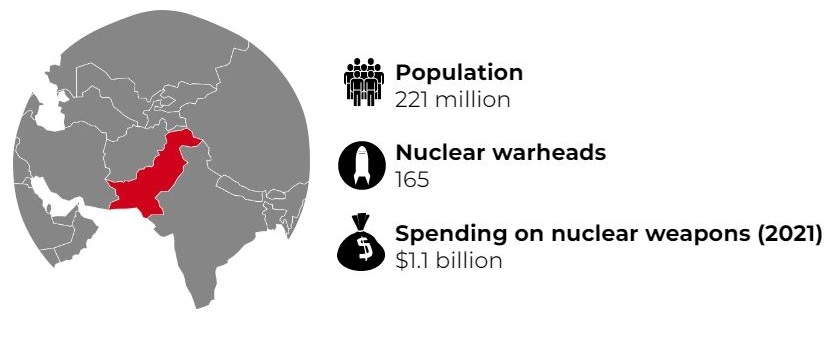
North Korea
North Korea is estimated to have at least 20 assembled and ready nuclear warheads and its currently working on a nuclear-capable missile system that can carry the warheads in a surface-to-surface attack. Although very little public information is available about North Korea’s nuclear weapons program, according to some reports from South Korean official sources, North Korea spent $8.7 billion on its military in 2009. ICAN has used the same statistics to predict that North Korea has spent at least $642 million on its nuclear weapons development in 2021.
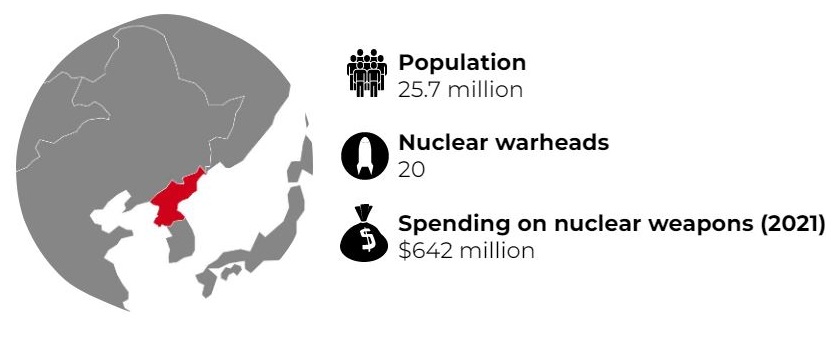
Largest Earners
Contractors and defense manufacturers from the weapons industry are the biggest beneficiaries of the 2021 spending spree, while think tanks and private research organizations also managed to gather a lot of funding. The nuclear weapons industry took home a large chunk of total spending accounting for at least $19.2 billion for their works related to the nuclear weapons development. The largest earners of 2021 are enlisted as below:
Companies |
Earnings (USD Millions) |
BAE Systems |
$129 |
General Dynamics |
$1700 |
Honey Well International |
$6200 |
Lockheed Martin |
$1900 |
Raytheon |
$409 |
Northrop Grumman |
$5000 |
Boeing |
$384 |
Bechtel |
$1400 |
Think Tanks |
Estimated Funding |
Brooking Institute |
$ 1.1 million |
Atlantic Council |
$ 1.2 million |
Carnegie Endowment for |
$ 1 million |
Center for New American Security |
$ 2.2 million |
International Institute of |
$ 1 million |
Hudson Institute |
$ 300 thousand |
Royal United Services Institute |
$ 1.4 million |
ALSO READ:

















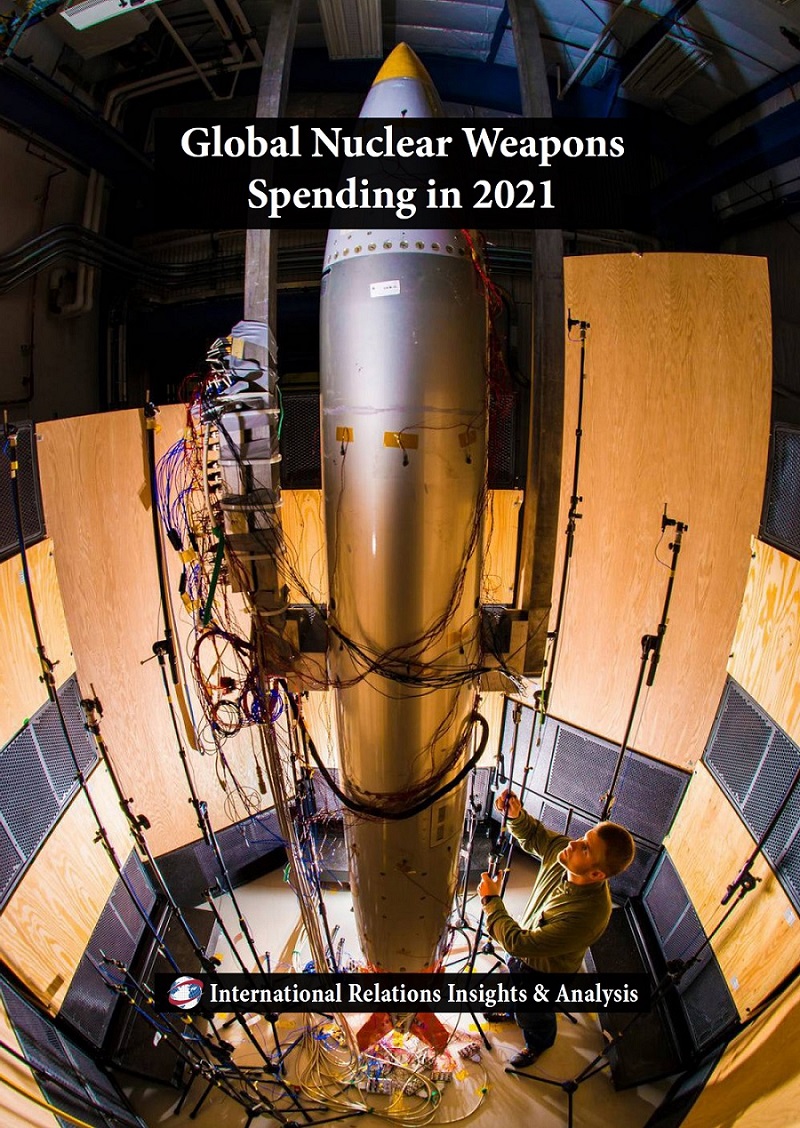

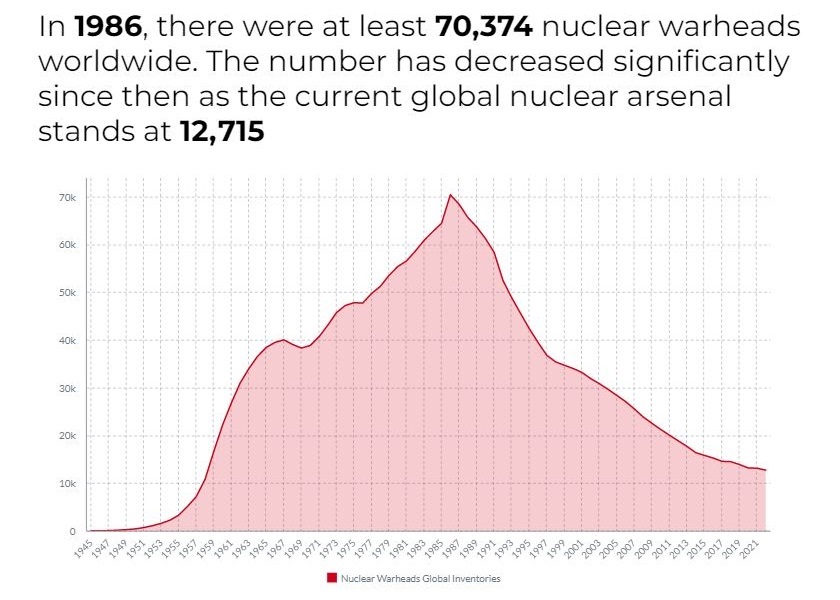
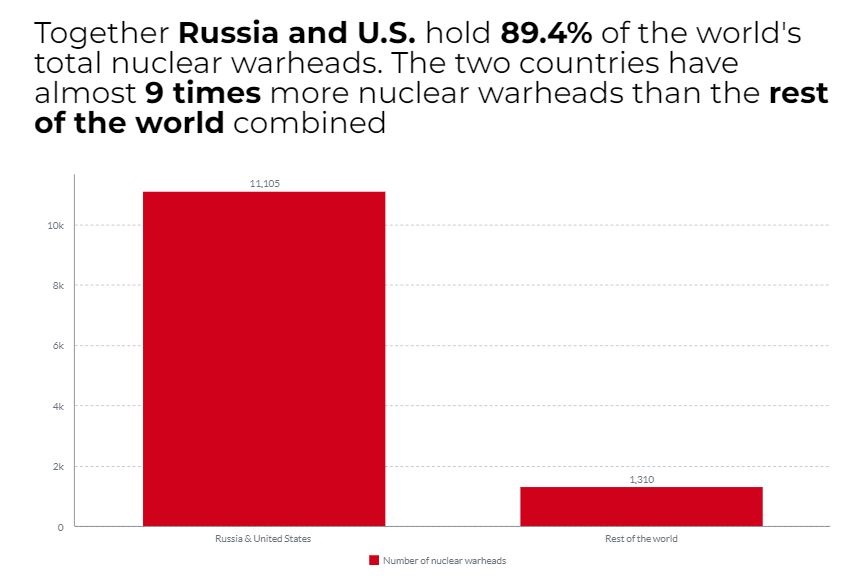
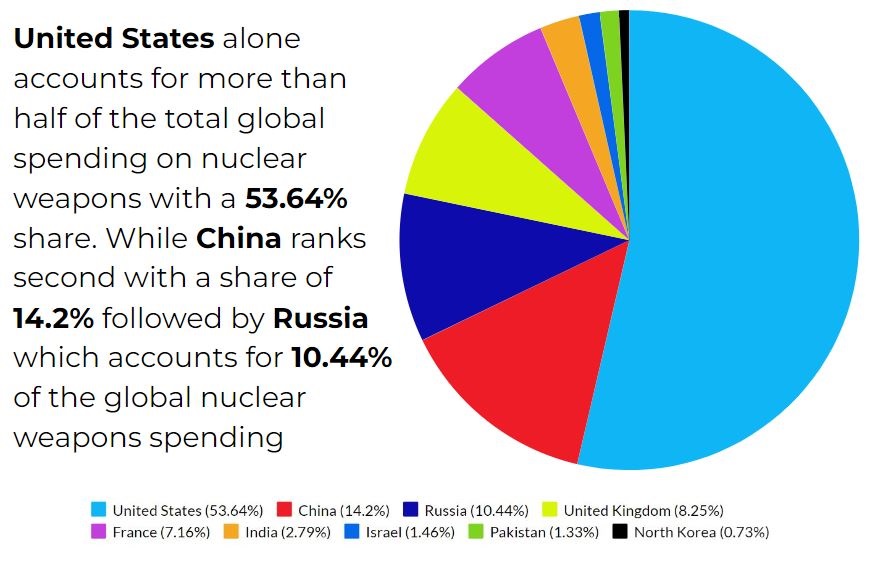
 Hypersonic and Directed-Energy Weapons – A New Arms Race
Hypersonic and Directed-Energy Weapons – A New Arms Race United States develops new Hypersonic Interceptor System
United States develops new Hypersonic Interceptor System







